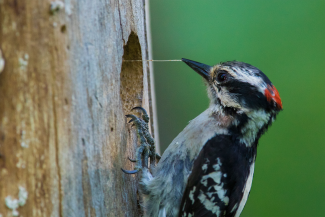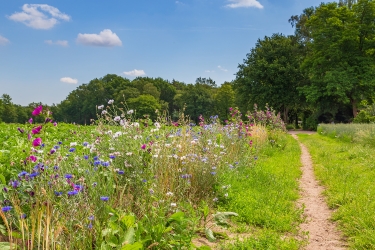Microhabitats, the building blocks of biodiverse ecosystems

In forests, microhabitats are small areas whose conditions differ from those of the more extensive habitats around them. Forest microhabitats such as decomposing logs or tree cavities offer food and shelter to a variety of birds, fungi, insects and microorganisms and serve as rescue sites for them to repopulate degraded forest areas once conditions become more favourable. They might seem uninhabited at first glance, but a more careful look reveals that they are teeming with life!
It is thus important to protect, retain and restore not only forest landscapes but also small-scale, tree-related habitats. Such measures support biodiversity conservation and contribute to healthy and resilient forest ecosystems. This is particularly important in managed forests where microhabitats tend to be rarer than in protected areas. By learning about these little wonders on Earth, forest managers and owners can protect them better also in productive forests.
So if you want to join a virtual exploration of dendrotelms, bark pockets, fork splits, witches’ brooms, woodpecker foraging excavations and other microhabitats with intriguing names, we invite you to take a look at the series of short, snappy and instructive videos produced by the Sylvotheque project. It will change the way you look at forests!
You can access the complete playlist on YouTube and follow the EFI Resilience Twitter account over the course of the next weeks to learn more about specific microhabitats. In addition, you can also take a virtual tour through forests with mapped microhabitats on the Sylvotheque platform, developed by the Swiss Federal Institute for Forest, Snow and Landscape Research (WSL), the Centre national de la propriété forestière (CNPF), INRAe, Dynamiques et Écologie des Paysages Agriforestiers (DYNAFOR) and the Bern University of Applied Sciences – School of Agricultural, Forest and Food Sciences (BFH-HAFL).
For more information, check out the Catalogue of Tree Microhabitats and the website of the Integrate Network. The Network is dedicated to the integration of forest use and biodiversity conservation by promoting the identification, preservation and restoration of tree-related microhabitats through education and training in marteloscope sites.
This story was published on the EFI Resilience blog on 22 April 2022 to celebrate the Earth Day.
Photo: Mircea Costina Photography / AdobeStock


